 It was the Whisper heard from coast to coast. 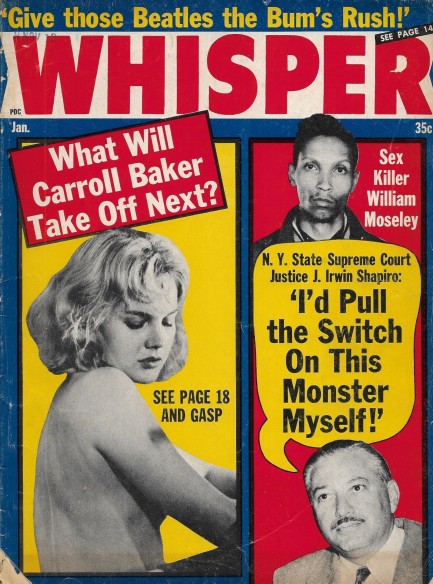
Above is a cover of the tabloid Whisper from January 1965, with actress Carroll Baker, convicted murderer Winston Moseley, and New York judge J. Irwin Shapiro starring on the front. But before we get into the magazine, we want to share the good news that our longtime scanning problems are fixed. We didn't get a new scanner, though. We got a new computer—a Mac Studio with plenty under the hood. It's quicker than the old Mac, but it also changed the functionality of the scanning interface. The whole process runs differently, and is about three times faster now. So you'll be seeing more magazines in the future. Turning back to Whisper, Winston Moseley—who editors call William for some reason—was America's villain of the moment for the murder of Catherine Genovese, who he stalked, stabbed with a hunting knife, then found again where she had taken refuge in a building, and finished her off. Additionally, Moseley was a necrophiliac. He raped his victims—of which there were three total—post-mortem. Of the trio of victims Genovese is the one that's remembered today because her murder sparked a national reckoning about the relationship between citizens and the police, as well as life in big cities, because the press reported that thirty-eight people had seen the crime happening but had done nothing. As it turned out, that number was wildly inaccurate, but never let the truth get in the way of perfectly cooked, juicy tabloid outrage. A quote appeared in nearly every story about the murder: “I didn't want to get involved.” New York City—where the crime occurred—and other metropolitan centers were criticized as uncaring places. Author Harlan Ellison, who at that time was writing urban crime fiction, weighed in, saying, “not one of [the witnesses] made the slightest effort to save her, to scream at the killer, or even to call the police.” Peak outrage was achieved by New York State Supreme Court Justice J. Irwin Shapiro when he expressed a desire to execute Moseley himself. In the end, Moseley wasn't executed at all. He died in prison in 2016 at age eighty-one.
Elsewhere in Whisper, you'll notice that the magazine is—unsurprisingly, given the time period and nature of the publication—antagonistic toward gay men, as demonstrated by the panel with the blaring text: “Who's Queer Asked the Peer?” But what is a surprise is that later in the issue the editors run a detailed piece on transvestites and transsexuals, and the approach is very different than the contempt shown toward homosexuality. As we've pointed out many times before, mid-century tabloids had a deep interest in trans issues. The story is titled, “A Doctor Answers What Everyone Wants To Know About Sex Change Operations.” The tone is as follows:
The condition he referred to was the common plight of all male transsexuals. Physically he was a man, but emotionally and personality-wise he was a woman, a condition that made it difficult to find successful employment, and to live at all happily. Fortunately, in his case, he had a lawyer and a wise judge who were able to help him in his wish to go to Europe for a sex change operation so that his body could be brought into greater harmony with his mind, and enable him to work and live with a degree of happiness he had never known before.
That's respectful—if not even compassionate—for a 1965 publication considered lowbrow by sophisticated readers. Is it a paradox that the magazine could be so evil toward gay men, yet so civil toward transsexuals? We think so, and we'd love to know the thought process behind it. While we're puzzling that out, you may want to move on to Whisper's slate of celebrity news. Everyone from Romy Schneider to Ernest Borgnine get their due exposure. We've uploaded the magazine's “Behind the Whispers” feature, so you can get the dish on a few Hollywood stars. Please enjoy.
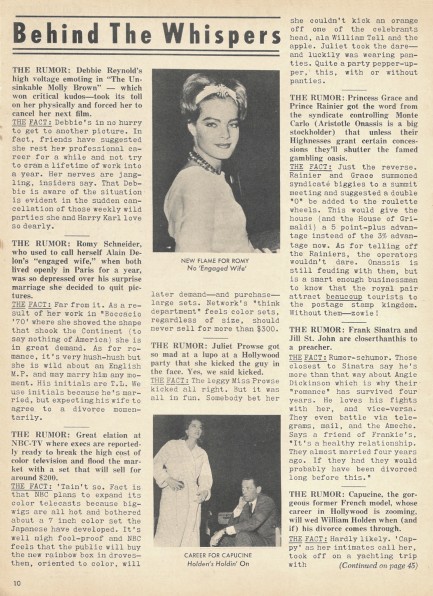  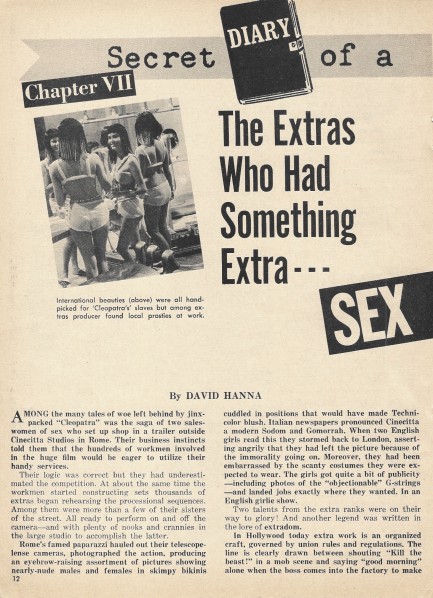 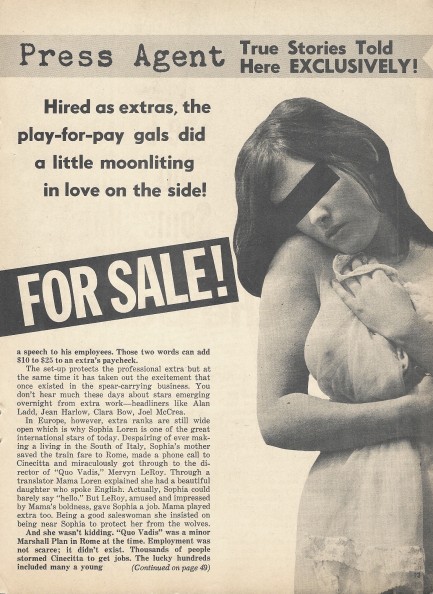 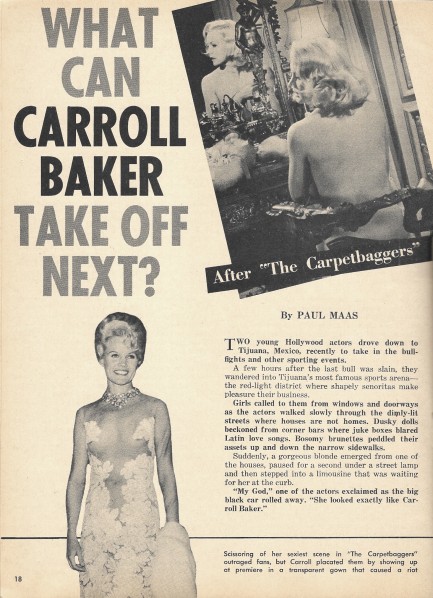 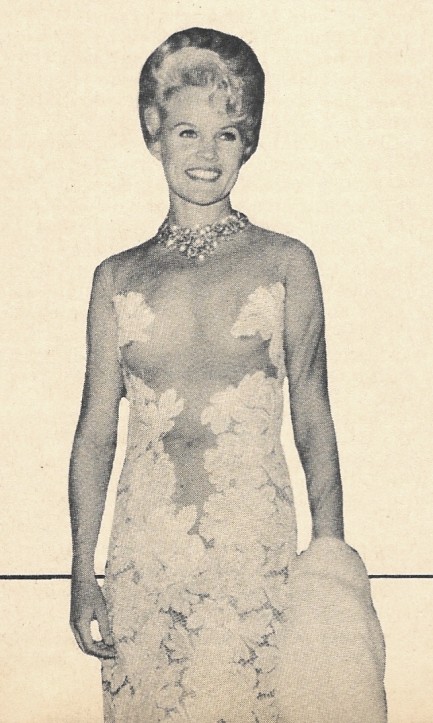 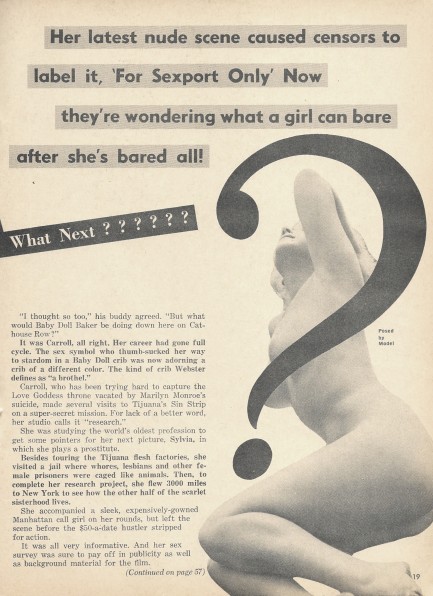 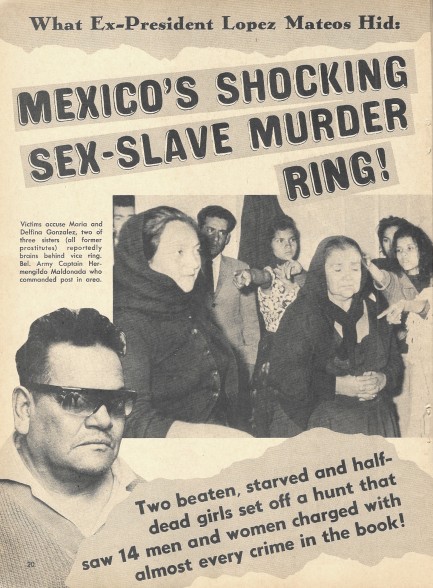 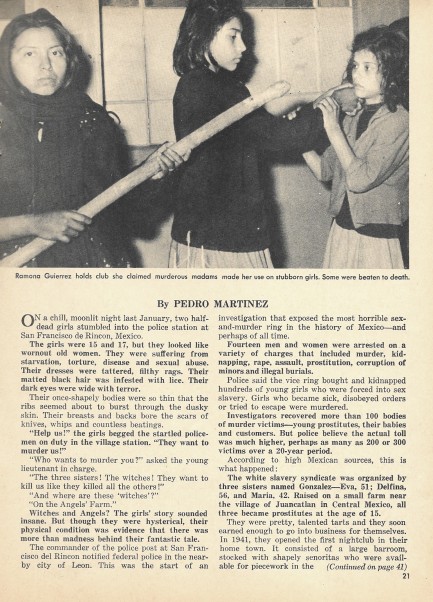 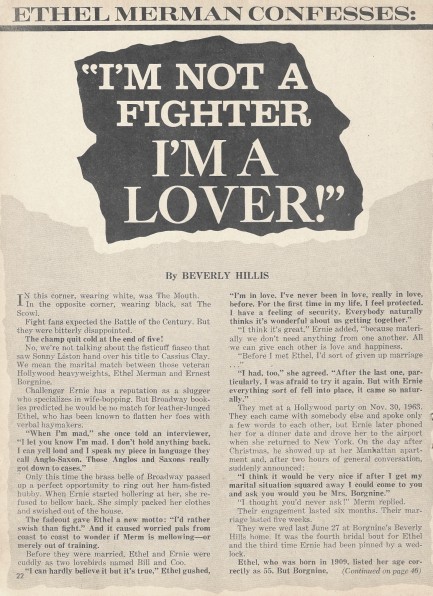 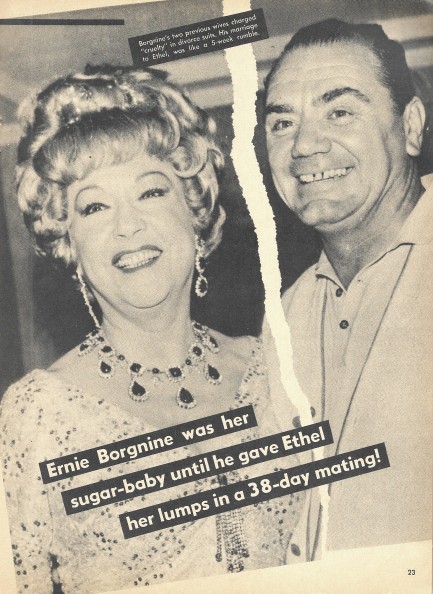 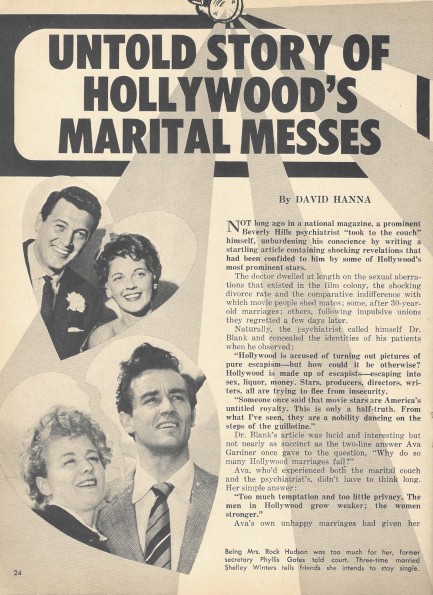 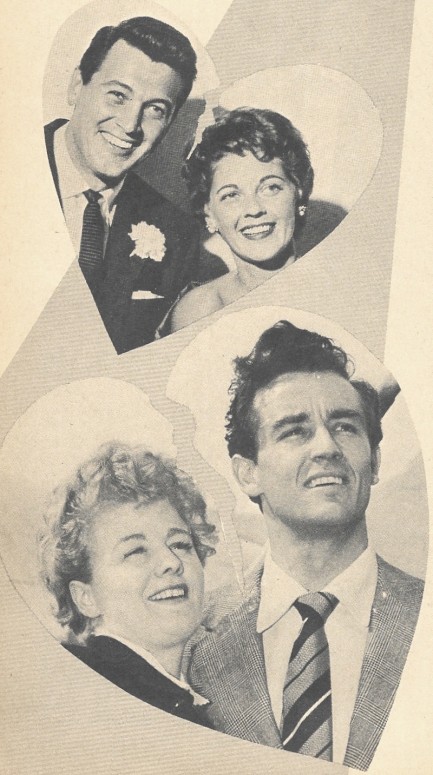 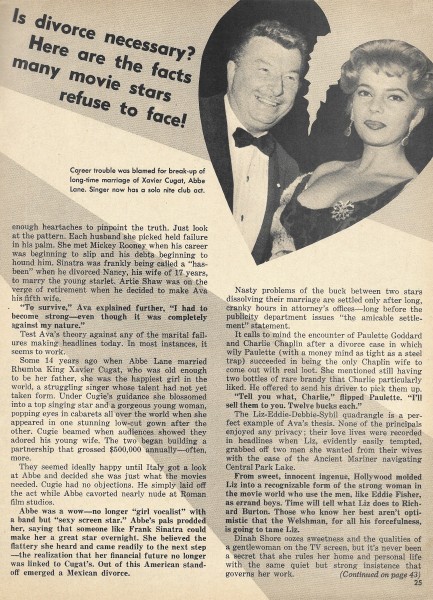 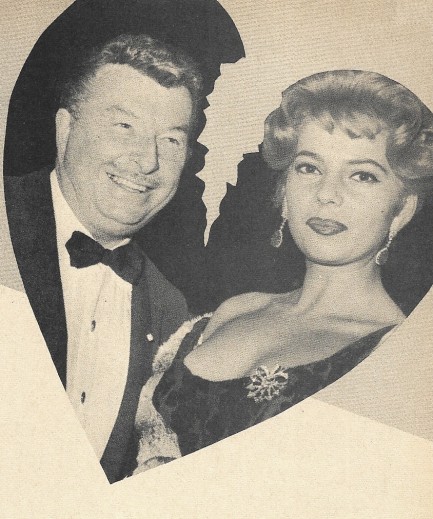 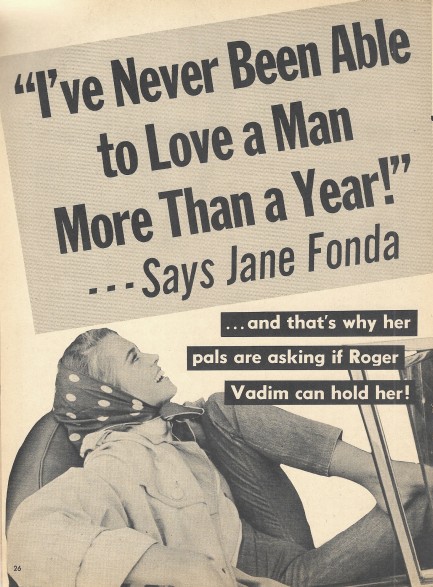 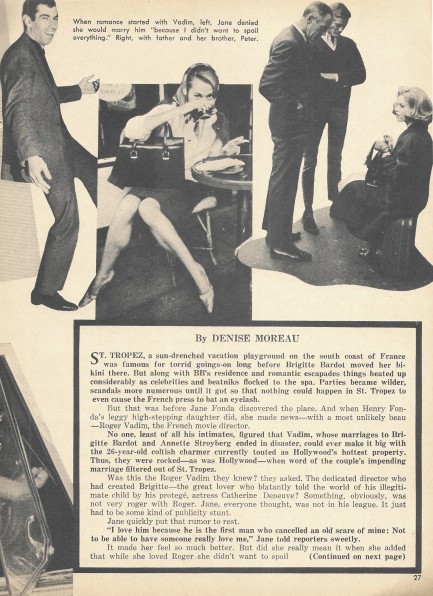 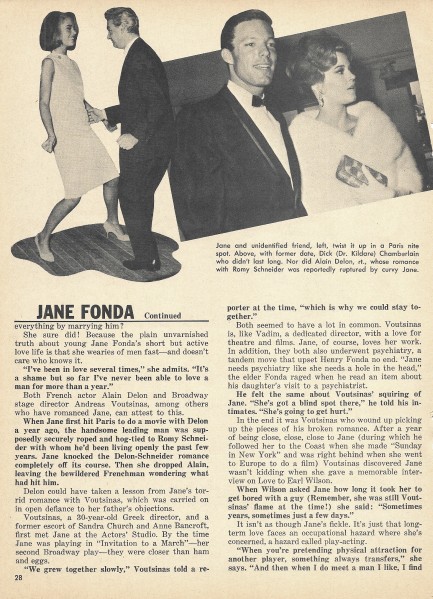 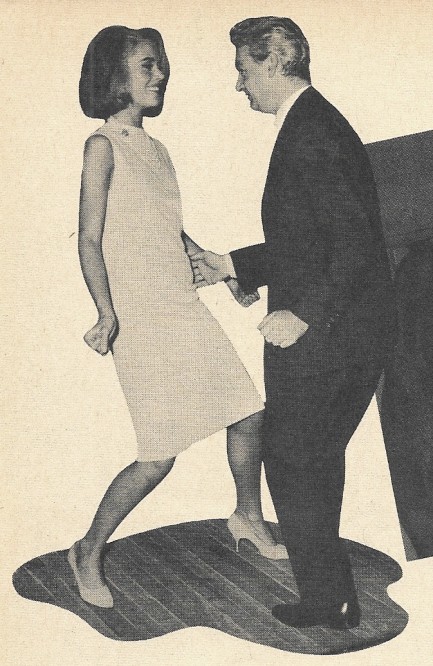 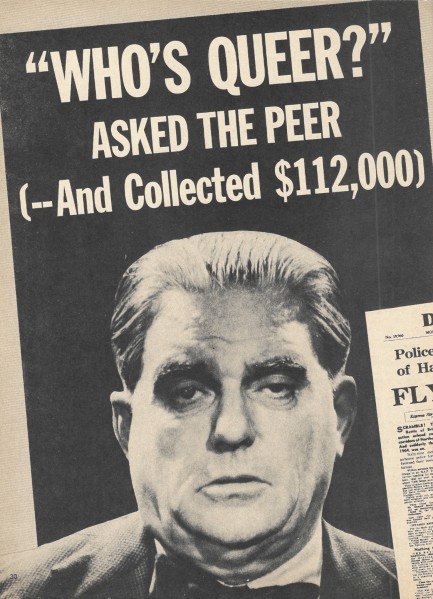 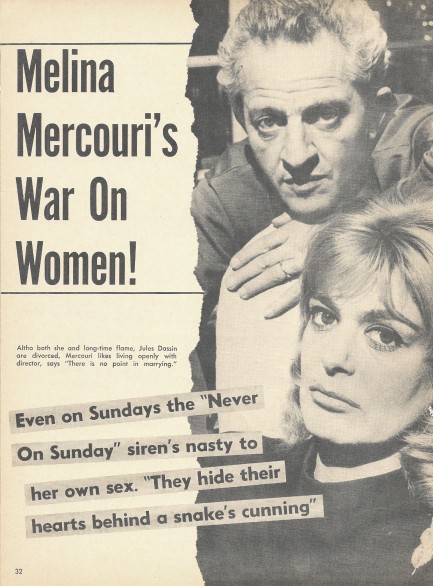 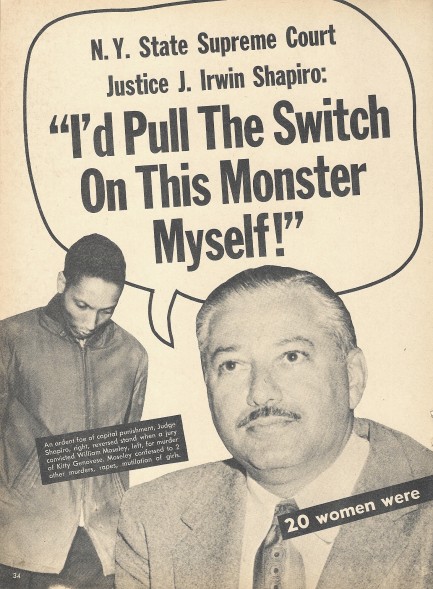 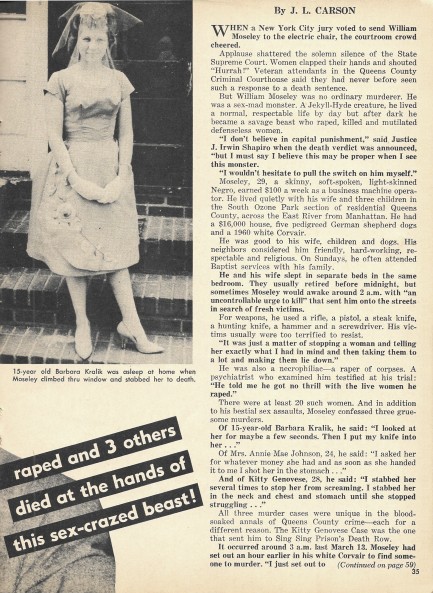 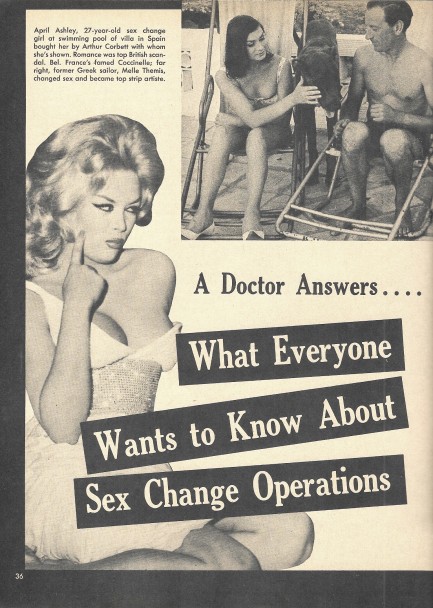 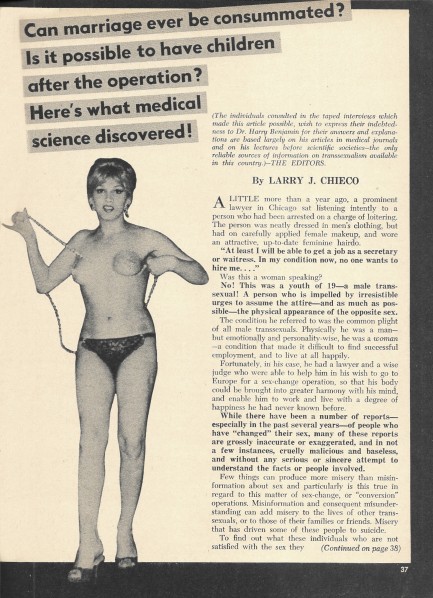 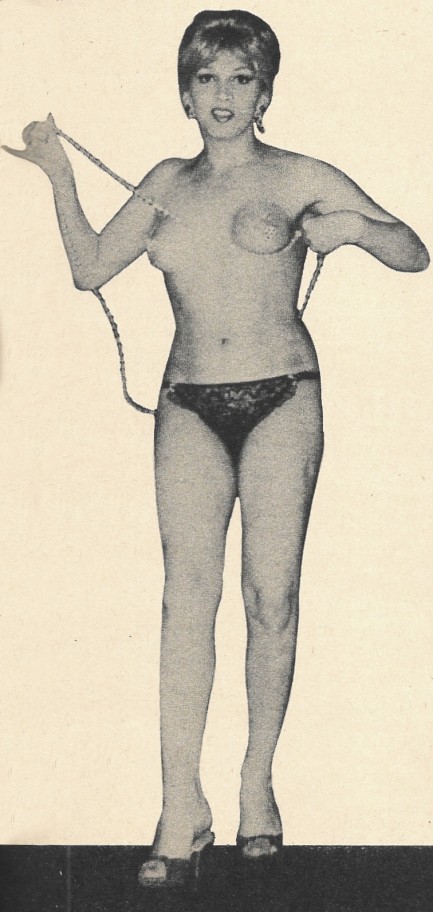 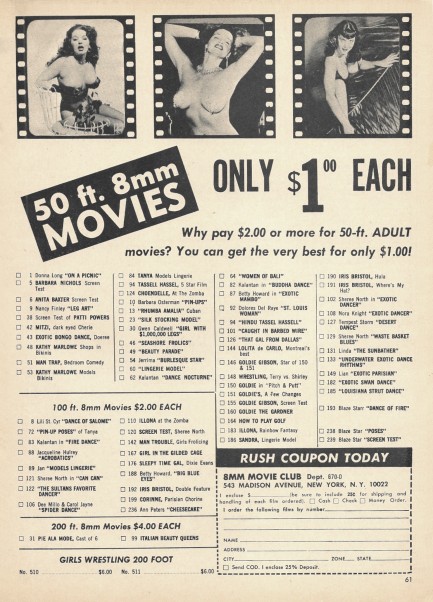
 An American con man in London. 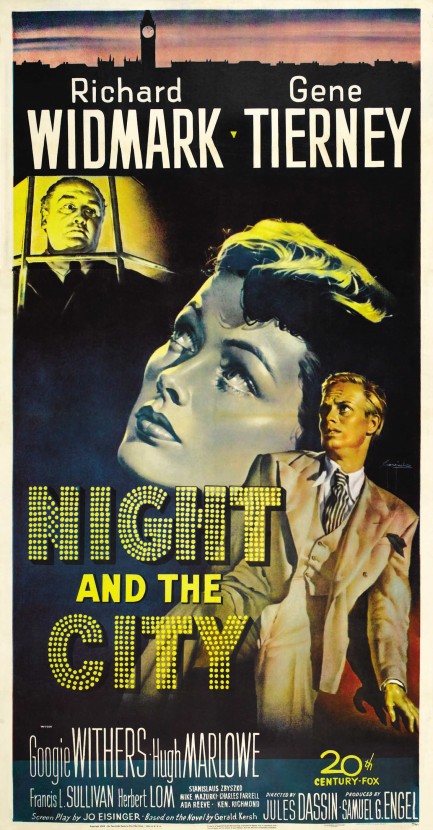
Amazing that we haven't talked in detail about Night and the City yet, but all things in good time, and the time is now. Directed by Jules Dassin, this is one of the top entries in the film noir cycle, featuring Richard Widmark playing an American named Harry Fabian who's trying to hustle his way to riches in postwar London. Being a hustler, he long ago gave up the idea of working a fair job for a fair wage, and instead has been involved in so many spurious get-rich-quick schemes that nobody believes in him anymore. But when he stumbles upon the greatest greco-roman wrestler of all time, he cooks up a plot to take over wrestling promotion in London—and this scheme is a sure thing.
Widmark's performance hinges upon nervous energy and emotional desperation, as he shapes Harry Fabian into one of the greatest characters in the film noir annals, a man who's equal parts pitiable, ridiculous, and dangerous. He's the ultimate noir loser, a man who simply cannot see the forest for the trees. Gene Tierney, who any normal man would worship twenty-four hours a day, plays his girlfriend, beautiful and forbearing, but whose presence Fabian warps into yet another reason to grift his way to a fortune. He feels that a guy in his meager circumstances doesn't deserve her—which completely overlooks the fact that he already has her.
As Widmark tries to hold his caper together the rug is pulled from under him multiple times, yet like any serious hustler he manages to stumble improvisationally onward with lies and wishful thinking. His constant sowing of the seeds of his destruction is hard to watch, because as viewers we can see where and how he's going to fail—or possibly, just possibly, fate will grant him a miracle though he very much deserves to fail. One of the cool things about film noir is that its leads tend to be terribly flawed, but here Widmark is a human clearing house for bad character traits, and the worst of them is the one he has no control over—he was simply born under a bad star.
All in all Night and the City deserves its reputation. We have a few quibbles, but they're purely personal. For example, female leads in these old films often perform a song and Tierney's is atrocious, sadly. And if we were going to be very picky we'd add that it's also hard to buy the wonderful Tierney and the unctuous, work-averse Widmark as a couple, but of course, willing suspension and all that jazz requires that we go with it. The movie works even if Widmark refuses to. Give it a watch. You won't regret it. Night and the City had its world premiere today in 1950. 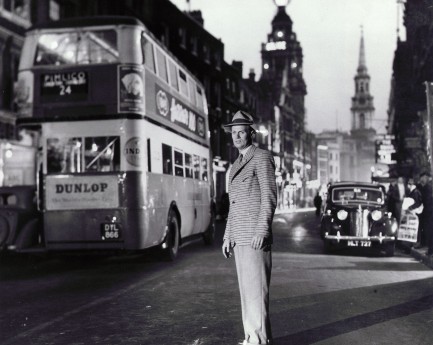 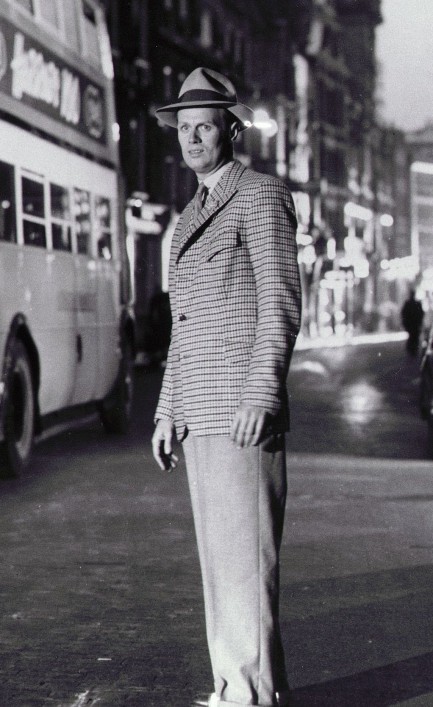 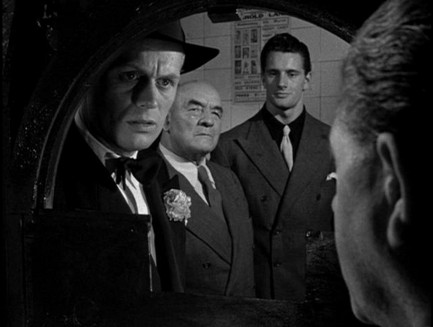 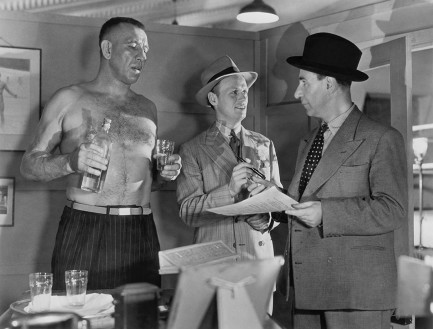 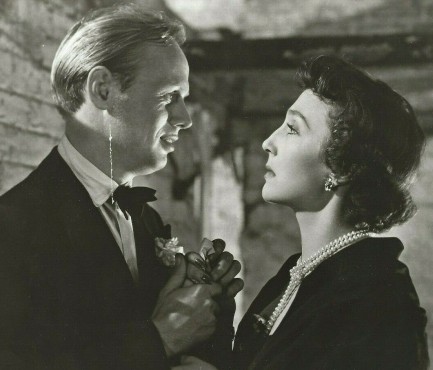 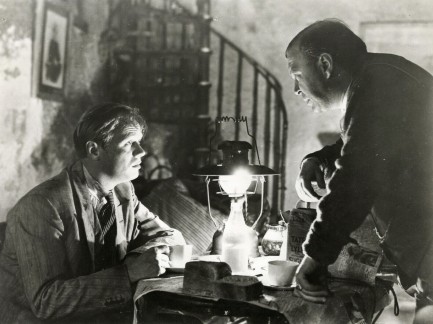 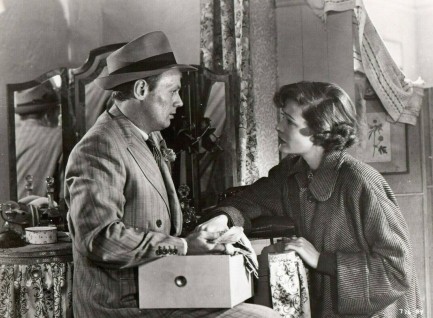  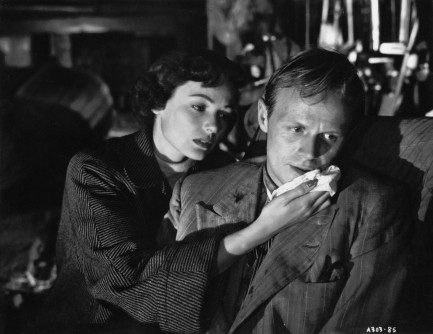 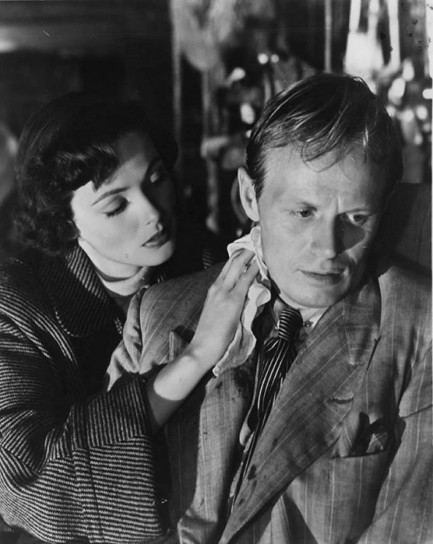 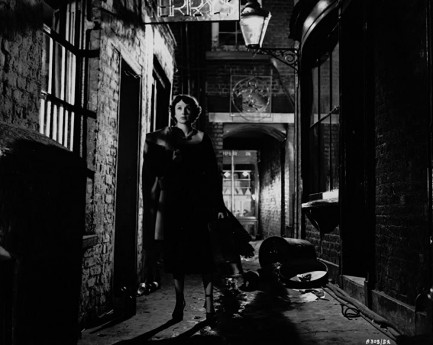 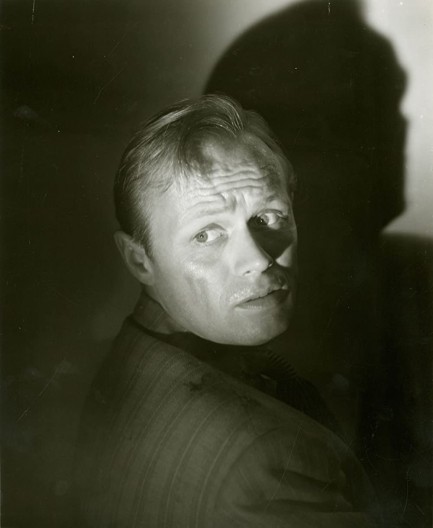 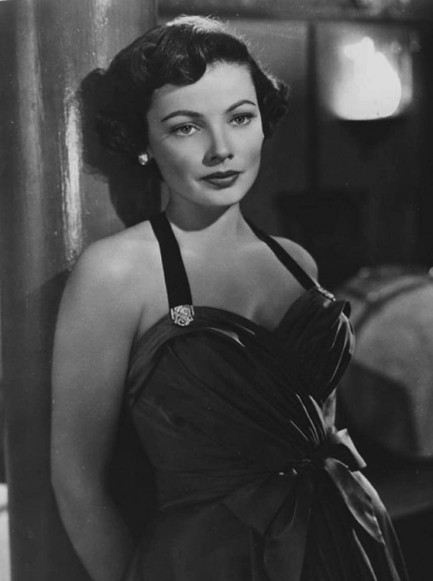 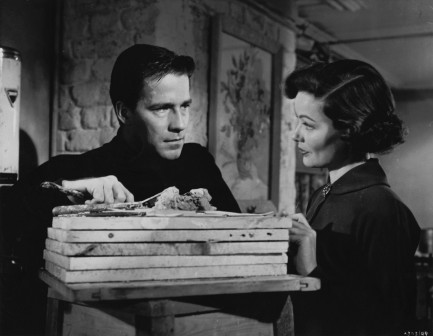 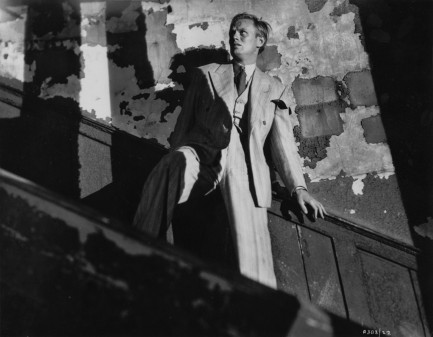 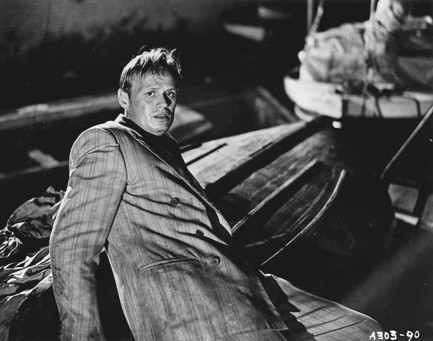
 An American con man in London. 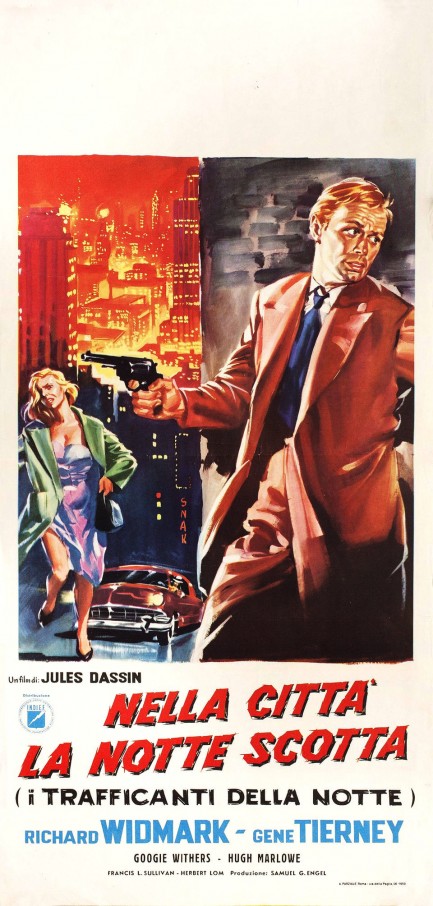
Above: a nice Italian poster for Jules Dassin's 1950 film noir Night and the City. The city is London, which proves to have numerous hazards for shady Richard Widmark. In Italy the movie was called I trafficanti della notte, then retitled Nella citta la notte scotta. You see both on the poster. Earlier promos exist that have only the first title, but we like this later one painted by Renato Casaro the most. It has a beautiful glowing cityscape in the background. Amazing work. We don't know why the title was changed, but the original translates as “the traffickers of the night," while the second is, “in the city the night is hot,” so maybe the distributors simply preferred the more poetic second title. We certainly do. We haven't talked about this movie yet, but we'll get to it a little later. It opened in Italy today in 1951.
 C'est nous qui d'mande du Rififi. 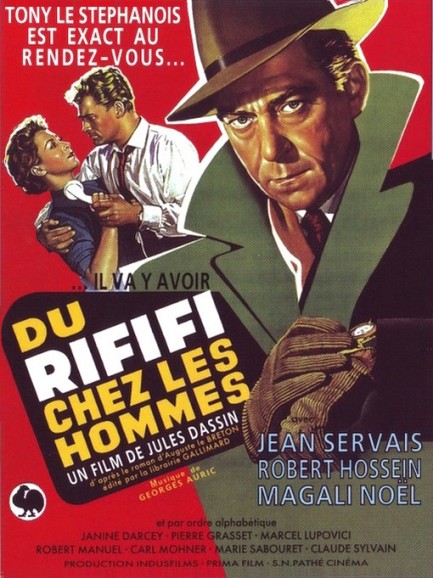
Tonight the Noir City Film Festival screens Jules Dassin's classic crime drama Du rififi chez les homes, aka Rififi for the second time in three years. It's appropriate, though, since Dassin was the noir master behind Night and the City, Thieves' Highway, The Naked City, and Brute Force. Based on Auguste Le Breton's novel, Rifiifi came in 1955 after Dassin's work had been absent from Hollywood screens for five years—a break brought about due to his blacklisting by the anti commie crowd. Dassin made Rififi in France and reminded Hollywood exactly what they had lost.
We first meet the character Tony le Stéphanois in a poker game where he's lost his shirt. The other players won't let him continue without more cash, and that's how we meet his close friend Jo, who's called in to take Tony home. Tony is a big time criminal fresh out of prison and down on his luck, while Jo is a green young crook. Jo and his accomplice Mario have hatched a plan to cut the glass out of a jewelry store window and steal the few gems in the display, and they ask Tony to partner with them.
Our introduction to this trio makes them all seem sympathetic, but this Tony is a bad guy. When does that become crystal clear? When he whips his ex-girlfriend with a belt. Which beyond its literal significance also seems to indicate that people around Tony get hurt generally. He soon convinces Jo and Mario that their smash-and-grab idea is peanuts, and under his influence the plan grows into a full scale heist—one of the most memorable heist sequences in cinema, containing almost no dialogue, and running close to half an hour of screen time.
If you've never seen the film you may be wondering what exactly is “rififi”? A name? A place? The idea is explained in detail to a nightclub audience in a highly entertaining number by Magali Noël, because even French audiences of the day didn't know what it meant. We could tell you what Noël sang about it, but what would be the fun in that? If you want to know you'll have to watch the movie. 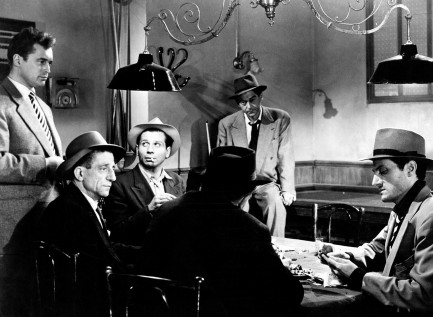
 Who needs force when you have firepower? 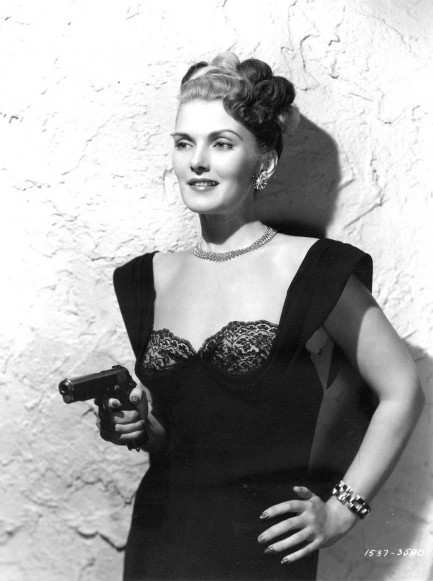
Anita Colby, née Anita Counihan, is probably most remembered for her role as the bad girl Flossie in Jules Dassin's film noir Brute Force. It was one of only a few cinematic parts she landed, but it was a memorable one—she robs John Hoyt at gunpoint, kicks him out of his own car, and leaves him stranded. But he remembers her somewhat fondly anyway. Here's how he describes her to another character: “Flossie had looks, brains and all the accessories. She was better than a deck with six aces. But I regret to report that she also knew how to handle a gun—my gun.” Well, nobody's perfect. This image dates from 1947.
 San Francisco’s famed film festival goes international. 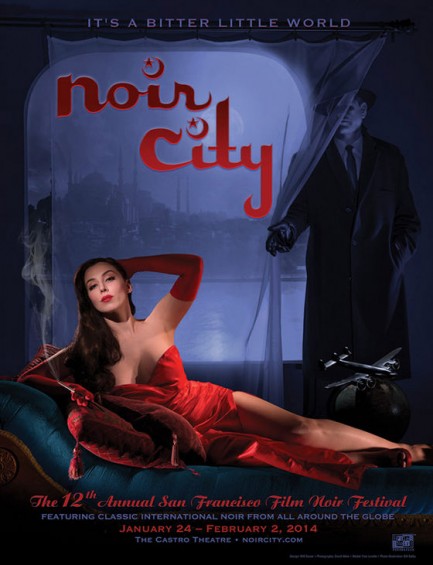 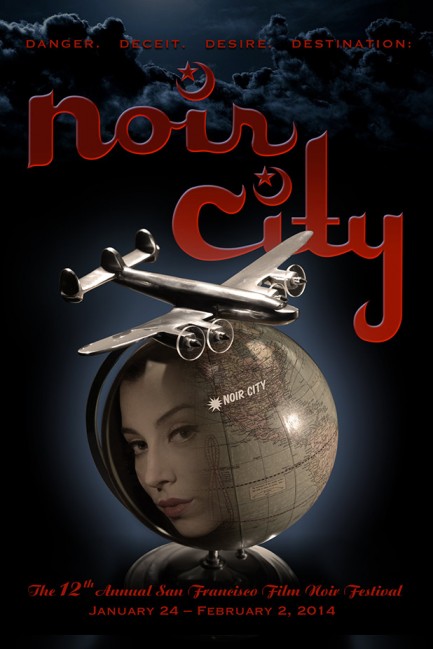
Living overseas is sometimes bittersweet. While the people, the food, the bars, the beaches, the lifestyle, and a hundred other aspects are wonderful, there are no film noir festivals (and no decent pizza, but that's another story). Anyway, today we’re sad not to still be living in the San Francisco Bay area because it’s the first day of the Noir City Film Festival. Ironically, this year’s version, the twelfth in the series, looks toward other countries and includes movies set in France, Britain, Mexico, Singapore, Macao, and more. The films, which screen at San Fran’s Castro Theatre, include The Third Man, Akira Kurosawa’s Yoidore tenshi, aka Drunken Angel, Jules Dassin’s Du rififi chez les hommes, aka Rififi, and two dozen other films. All in all, a great collection. The photoillustrated poster art above (the first is the official promo and the second is the teaser that came out last year) is also pretty nice, though not up to the standard of previous years. But you can decide that for yourself—we’ve shared the entire run of Noir City posters and you can see those here.
 There are eight million stories in The Naked City. 
Above: a great French poster for Jules Dassin’s film noir La cité sans voiles, which was originally produced in the U.S. and called The Naked City. Dassin, who apprenticed under Alfred Hitchcock, was one of the quintessential noir directors, also helming 1947’s Brute Force, 1949’s Thieves’ Highway, and 1950’s spectacular Night and the City. His career in the U.S. was ruined when he was named during the anti-communist hysteria of the 1950s, forcing him to live the rest of his life in more tolerant France. It was there that he made the 1955 heist thriller Du rififi chez les hommes, aka Rififi, possibly his best—and best remembered—work. The Naked City, while not perfect, is certainly a significant piece, due to both its style and substance. Its tagline has become part of the American lexicon: "There are eight million stories in the naked city; this has been one of them." In 2007 the U.S. Library of Congress agreed that The Naked City was a special achievement when it selected the film for preservation in the National Film Registry for being “culturally, historically and aesthetically signifitcant.” For Dassin, who'd been persecuted for a political belief, maybe the award was some small consolation. If so he didn't get to enjoy it long—he died the next year. La cité sans voiles premiered in France today in 1949.
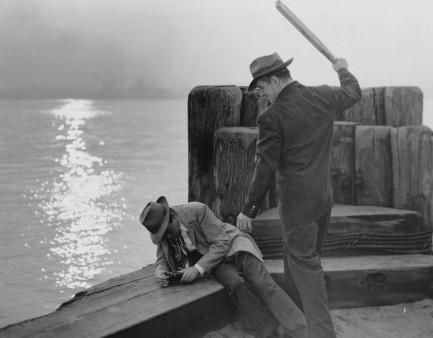  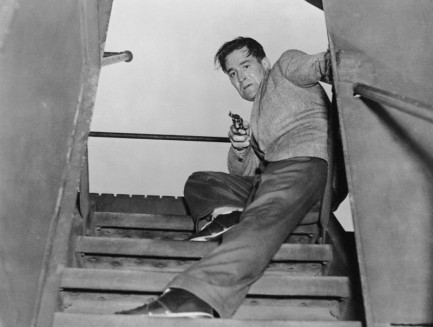 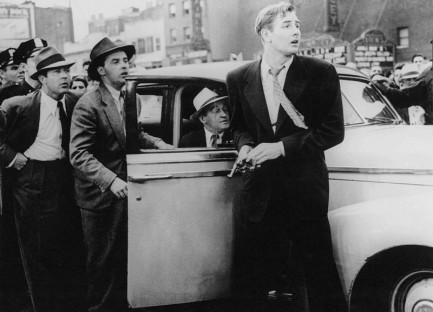
 Gene Tierney was born with everything, but life took much of it away. Her name was Gene Tierney and she lived a fairytale existence before ever becoming a movie star. Her parents and grandparents were wealthy. She attended the finest schools on the East Coast and was sent to finishing school in Switzerland. She decided she wanted a career in theater and her father formed a corporation to promote her ambitions. Even in her earliest, smallest stage roles, critics were dazzled by her beauty. Hollywood was a natural next step, and she took it by signing with Twentieth Century Fox and appearing in 1941’s Hudson Bay. The roles and good reviews kept coming, and soon she starred in Otto Preminger’s 1944 noir Laura, about a police detective who falls in love with the portrait of a dead woman. Or at least he thinks she’s dead. Tierney was perfect in the title role—that of a woman more beautiful yet more complicated than her alluring painted image. Laura was a hit and Tierney became a huge star. But unbeknownst to most, Tierney’s fairytale existence had already taken a dark turn. She had married renowned designer Oleg Cassini in 1941 and by 1943 was pregnant. But the baby girl was born brain damaged because, while pregnant, Tierney had somehow contracted rubella, a form of measles transmitted through fluid emission, the same way flu can be passed. Tierney was consumed by anger and guilt over her daughter’s condition, but her career was in full swing and she managed to hide her anguish as the roles continued—A Bell for Adano and Leave Her to Heaven in 1945, Dragonwyck and The Razor’s Edge in 1946, and The Ghost and Mrs. Muir in 1947. At some point, at some public function or other, Tierney randomly encountered a woman who said they had actually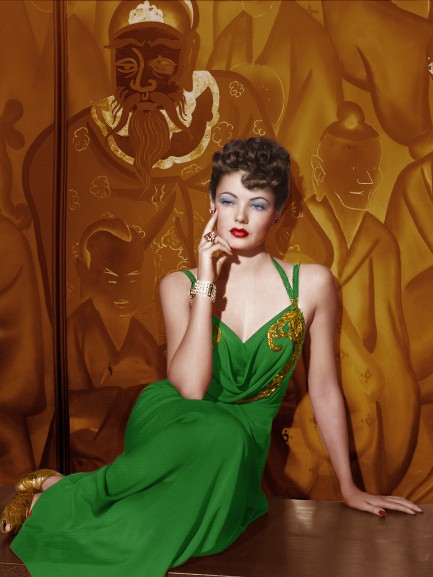 met before, during one of Tierney’s appearances at the Hollywood Canteen. In fact, the woman had been in the Marines at the time and had wanted to meet Tierney so badly she had broken a quarantine to do so. It took another chance meeting with the same woman before Tierney put two and two together: “A year later, I met the same girl again on the tennis courts at a friend’s home in Hollywood. She reminded me of the night she had broken quarantine. 'I got the German measles,' she said. 'Did you get them, too?'" Tierney said that after the woman had recounted her story, she just stared at her silently, then turned and walked away. She wrote in her autobiography, “After that I didn’t care whether ever again I was anyone’s favorite actress.” met before, during one of Tierney’s appearances at the Hollywood Canteen. In fact, the woman had been in the Marines at the time and had wanted to meet Tierney so badly she had broken a quarantine to do so. It took another chance meeting with the same woman before Tierney put two and two together: “A year later, I met the same girl again on the tennis courts at a friend’s home in Hollywood. She reminded me of the night she had broken quarantine. 'I got the German measles,' she said. 'Did you get them, too?'" Tierney said that after the woman had recounted her story, she just stared at her silently, then turned and walked away. She wrote in her autobiography, “After that I didn’t care whether ever again I was anyone’s favorite actress.” The revelation changed Tierney. By 1950 she was suffering from depression and bi-polar disorder, yet managed a good performance in another classic noir, Jules Dassin’s dazzling Night and the City. But while her reviews were still good, her marriage to Cassini was failing. They divorced in 1952. Tierney’s depression persisted and doctors treated her with electroshocks—thirty-two sessions that completely erased portions of her memory. Her fairytale life was gone. Meanwhile she was enduring a series of failed romances that led to even more depression. Her career sputtered and in 1955 she stopped acting. When she felt ready for a comeback in the early sixties, her star had faded. After several more roles, she settled into retirement in Texas and finally died of emphysema today in 1991. But Tierney is one of the most fondly remembered stars of Hollywood’s golden age, and one of the few who got to play a role that was so perfectly a metaphor for her life. Like the lovestruck detective in Laura, the public fell for a portrait that was beautiful but ultimately false. As Tierney’s cool-as-ice Laura Hunt said, “To him, I, like everything else, am only half real. The other half exists only in his own mind.”
|
 |

The headlines that mattered yesteryear.
2003—Hope Dies
Film legend Bob Hope dies of pneumonia two months after celebrating his 100th birthday. 1945—Churchill Given the Sack
In spite of admiring Winston Churchill as a great wartime leader, Britons elect
Clement Attlee the nation's new prime minister in a sweeping victory for the Labour Party over the Conservatives. 1952—Evita Peron Dies
Eva Duarte de Peron, aka Evita, wife of the president of the Argentine Republic, dies from cancer at age 33. Evita had brought the working classes into a position of political power never witnessed before, but was hated by the nation's powerful military class. She is lain to rest in Milan, Italy in a secret grave under a nun's name, but is eventually returned to Argentina for reburial beside her husband in 1974. 1943—Mussolini Calls It Quits
Italian dictator Benito Mussolini steps down as head of the armed forces and the government. It soon becomes clear that Il Duce did not relinquish power voluntarily, but was forced to resign after former Fascist colleagues turned against him. He is later installed by Germany as leader of the Italian Social Republic in the north of the country, but is killed by partisans in 1945.
|

|
|

It's easy. We have an uploader that makes it a snap. Use it to submit your art, text, header, and subhead. Your post can be funny, serious, or anything in between, as long as it's vintage pulp. You'll get a byline and experience the fleeting pride of free authorship. We'll edit your post for typos, but the rest is up to you. Click here to give us your best shot.

|
|
































































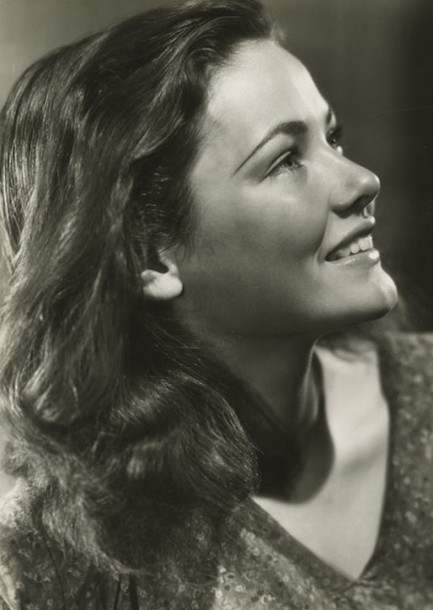
 met before, during one of Tierney’s appearances at the Hollywood Canteen. In fact, the woman had been in the Marines at the time and had wanted to meet Tierney so badly she had broken a quarantine to do so. It took another chance meeting with the same woman before Tierney put two and two together: “A year later, I met the same girl again on the tennis courts at a friend’s home in Hollywood. She reminded me of the night she had broken quarantine. 'I got the German measles,' she said. 'Did you get them, too?'" Tierney said that after the woman had recounted her story, she just stared at her silently, then turned and walked away. She wrote in her autobiography, “After that I didn’t care whether ever again I was anyone’s favorite actress.”
met before, during one of Tierney’s appearances at the Hollywood Canteen. In fact, the woman had been in the Marines at the time and had wanted to meet Tierney so badly she had broken a quarantine to do so. It took another chance meeting with the same woman before Tierney put two and two together: “A year later, I met the same girl again on the tennis courts at a friend’s home in Hollywood. She reminded me of the night she had broken quarantine. 'I got the German measles,' she said. 'Did you get them, too?'" Tierney said that after the woman had recounted her story, she just stared at her silently, then turned and walked away. She wrote in her autobiography, “After that I didn’t care whether ever again I was anyone’s favorite actress.”



































































